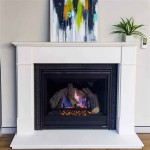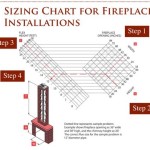Fireproof Material Around Fireplace: Essential Protective Measures for Your Safety
A blazing fireplace adds warmth and ambiance to your living space, but it also poses potential fire hazards. Installing fireproof material around your fireplace is crucial to safeguard your home and loved ones. Here are essential aspects to consider when choosing and installing fireproof materials.
Selecting Fire-Resistant Materials
The choice of fireproof material depends on factors such as the type of fireplace, proximity to combustible materials, and safety regulations. Common options include:
- Fireproof Wallboards: Gypsum wallboards with a fire-resistant core rated for specific fire resistance times.
- Non-Combustible Sheathing: Cement board or fiber cement panels that do not burn or support combustion.
- Fireproof Coatings: Specialty paints or coatings that create a protective layer on combustible materials.
Fire-Rated Distance Requirements
Building codes specify minimum distances between combustible materials and the fireplace. These fire-rated distances vary based on the fireplace type and local regulations. Ensure that your fireproof material extends beyond these required distances to provide adequate protection.
Fireproofing the Hearth
The hearth, the area directly in front of the fireplace, is particularly vulnerable to fire and heat. Use fireproof hearth materials such as tiles, brick, or non-combustible flooring to protect the floor from errant sparks or embers.
Protecting Surrounding Walls
Walls adjacent to the fireplace are also at risk of fire spread. Install fireproof wallboards or non-combustible sheathing on the walls within the fire-rated distance. Consider using non-combustible trim around the fireplace for added protection.
Fire-Resistant Mantle
If your fireplace features a mantle, choose a non-combustible material such as stone, metal, or fireproof-treated wood. This will prevent the mantle from igniting in the event of a fire.
Regular Maintenance and Inspection
To maintain the effectiveness of your fireproof material, regular maintenance and inspection are essential. Check for any cracks, deterioration, or damage that may compromise its fire resistance. Clean the fireplace thoroughly to remove soot and debris that could ignite.
Conclusion
Installing fireproof material around your fireplace is a critical step in ensuring the safety of your home and family. By selecting appropriate materials, observing fire-rated distances, and maintaining your fireplace, you can create a cozy and protected living space. Remember that professional installation is recommended for optimal protection and compliance with building codes.
Heat Resistant Materials For Stoves Fireplace Refractory Vitcas

Non Combustible Materials Explained Regency

Dk Studio

Heat Resistant Materials For Stoves Fireplace Refractory Vitcas

Non Combustible Materials Explained Regency

8 Best Materials For Fireplace Surrounds

Non Combustible Utah Fireplace Materials Basics And Necessity Comfort Solutions

The Top 3 Materials To Use For Hearths Fireplace Tips

Fireplace Fireproof Mat Pad For Outdoor Use Fiberglass Material Heat Resistant Home Fireproofing A Fruugo Bh

Freestanding Rustic Fireproof Material Corner Wood Electric Fireplace Mantels With Insert China Mantel Made In Com
Related Posts








